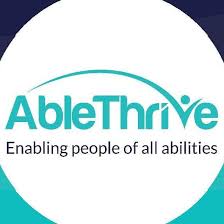|
I flew with Beth over Boston Harbor into Logan airport. John picked us up, and we dropped our daughter off at her college dorm with only weeks left in her last semester. The next goal? Her first tattoo. Since she couldn’t swim for a few days after the inking, she’d planned the timing perfectly, immediately after a big meet and right before her next training cycle.
It would be the last time two days passed without a long pool workout until after Beijing. The day after the team announcement in Minneapolis, I held Beth’s leg down firmly at a tattoo parlor in Harvard Square. Her leg protested the needle and bounced with involuntary spasms. She chose a two-inch design on her upper left thigh of the new U.S. Paralympics symbol of a bold blue star with three waving lines of color below. The star turned out flawless despite a moving leg. We shared Beijing details with Maria over dinner at Bertucci’s in the Square. And of course, Beth showed her sister the new tattoo. A clear and bright reminder of success. Both of Beth’s elbows swelled for the first time as she started her most intense training cycle with a focus on the forward freestyle, consistently faster than the backstroke after six years of practice. A doctor prescribed a strong anti-inflammatory at a high dose. Hit with a piercing, unrelenting headache, Beth called the doctor. He ordered an MRI for the same day. I drove her to the test, relieved I lived close instead of in Ohio. I’d never seen her in that much pain before. Fortunately, the test results came back normal, and her symptoms gradually disappeared when she stopped the prescription. Newspapers in Massachusetts and Ohio printed articles about Beth’s upcoming Beijing trip. Her swim coach, Peggy, said, “Beth’s talents lie in her ability to set goals, both short and long term, overcome obstacles, and accomplish those goals while consistently maintaining a positive and fun attitude.” (Interested in a signed copy of Struggling with Serendipity? Click HERE!)
4 Comments
Beth and I flew together to Minneapolis the first weekend in April. At the Trials meet, she would probably earn a spot on the Beijing team. Even so, nothing was guaranteed.
Everything hinged on how fast she swam in the next three days. We welcomed Coach Becca to her first Paralympic meet. She met Peggy after emailing back and forth about training goals and workouts for almost two years. Beth laser-focused on swimming fast. No shopping at the Mall of America in the afternoon as she did at her first Minneapolis meet five years before. From the upper tier seats, I wrote to-do lists with end of college details and watched races. A young girl from the United States in her early teens swam as an S3, newly classified. She didn’t make finals cuts, like many at their first national meet. Judging from her expression, she saw the possibilities as Beth had six years before. No one had any way of knowing the new swimmer would be reclassified to S2 and S1 in the future, caught in the vague criteria of the low-numbered classifications. However, I had no doubt she’d be at the next Paralympic meet, getting faster and making more new friends. The morning after Trials, the ceremony to announce the Beijing Paralympics team filled the pool lobby. They called out names randomly, not alphabetically. The swimmer or coach moved through the crowd to be congratulated at the front. Each received a red, white, and blue hockey jersey with USA on the front and their last name sewn on the back in large letters. As the number at the front grew, I questioned my expectations. Beth glanced my way, and I responded with an encouraging smile. Then Peggy stood at the front with the team. Hearing my daughter’s name a minute later, we all shared a wave of relief and elation. Beth put on her hockey jersey with Kolbe in big letters on the back. As cameras flashed, she never stopped smiling, basking in the achievement of her four-year goal. To share the good news, I talked to John in Waltham while Beth called Coach Becca who had left the day before. Faithful to our tradition, we outlined Beijing plans with Peggy over scoops of chocolate ice cream. Next: Tattoo! p.s.- My new book, Struggling with Serendipity, is available everywhere books are sold. Top 100 on Amazon in two categories, thank you! :-) At Beth’s last Harvard Women’s Swimming and Diving banquet, the team donned gorgeous fresh-flower leis, gifts from a senior from Hawaii. Receiving the Coaches Award for attitude and contributions to the team surprised Beth. She presented her gold medal to Coach Morawski in gratitude.
The head coach framed the gold with a written tribute. The medal found a new home in the hallway leading to Blodgett pool among pictures of Harvard’s best. Beth would have more to add to her legacy. When the college swim season ended, Beth immediately plunged into a new training cycle. She worked with her Harvard coaches to prepare for the Paralympic Trials in April. Other Harvard teammates trained for the USA Olympic Trials or the Olympic Trials in their home countries. “The most amazing thing about Beth is though we classify her as someone who's disabled,” Coach Becca told a reporter, “she's just someone who shows the people around her how able she is.” At the end of February, Beth woke up one morning with a high fever and congestion. A chest x-ray showed a small pocket of pneumonia in the lower right lobe, not as severe as her first pneumonia. She insisted on trying antibiotics first before considering a hospital stay. I couldn’t convince her to minimize her swim training for more than a few days. She gradually felt better despite a relentless senior year and pool schedule. Next: Minneapolis Trials meet for the Beijing Paralympics! For Beth's third season on the Harvard Women’s Swimming and Diving roster, she added new pump-up songs to her swim meet iPod mix, including “Stronger” by Kanye West. I smiled when she sang along to the chorus. Maybe challenges really did make us stronger? During team practices, she usually typically swam a mile over two hours. In October, a doctor tried to drain her inflamed right elbow. He found no fluid, just swollen tissue.
Coach Becca worked with Beth during one-on-one sessions at Blodgett as well as team practices. “I never heard her complain,” the coach said in The Harvard Crimson. John and I looked forward to all of the HWSD home meets her senior year, often sitting sat with Maria in the red seats. At a November meet, with Harvard dominating the point count, three of Beth’s teammates wore flippers in a relay with my daughter substituted as the fourth. Other swimmers clustered at the end of the lane to cheer her on. She cut a whopping 10 seconds off her previous short course American Record in the 50 back, set at a HWSD meet only a year before. An article in the NCAA Champion magazine described how Beth, “added another level of excitement to home crowds at Blodgett Pool, especially when records were at stake.” “No matter what team we raced against,” Beth told a reporter, “people always came up to me and congratulated me. It was kind of strange sometimes, but I guess it's great for them to see someone with a disability compete on a college varsity team.” At the last home meet, swimmers on the men’s team honored Beth and the other seven seniors on her team with bouquets of flowers. Afterward, John, Maria, Beth, and I ordered pad Thai and big bowls of vegetable noodle soup at a Vietnamese restaurant in Harvard Square. The following weekend, I drove Beth to Yale in Connecticut to compete at the last away meet of the season. She laughed and clapped when the freshman swimmers on her team danced on the pool deck and sang, “We're All in This Together,” from High School Musical. Beth finished her Harvard career with six Paralympic American Records set at Blodgett pool in the free, back, and butterfly. *More exciting book news! Book talks and signings soon in Washington DC, Ohio, and Boston bookstores! bit.ly/mybooktour Hope to see you! My new memoir, Struggling with Serendipity, is available everywhere books are sold. Signed copies are available here: bit.ly/memoiroffer. ThAnK YoU FOR FOLLOWING MY BLOG! SOME OF YOU HAVE ASKED HOW TO GET A SIGNED BOOK: YOU ARE THE FIRST TO KNOW ABOUT EARLY ACCESS TO SIGNED COPIES OF MY NEW MEMOIR, STRUGGLING WITH SERENDIPITY! I am so grateful for your support and encouragement since I started sharing our story in this blog three years ago! One fall morning, Beth wheeled across the pool deck at Blodgett, and the Harvard men’s coach led his team in applause for her Rio medals. She swam six days a week in and out of the HWSD season during her senior year.
Coaches planned her training cycles to build up to her most important swim meet to date, the Paralympic Trials in April. Occasionally, I met Beth in the Blodgett lobby, helped her over the alarmingly-inaccessible bridge to Harvard Square, and bought us brunch, our favorite meal of the day. I encouraged her to use the bus after practice more often, but she didn’t. Maria taught five preschoolers with multiple disabilities in the Cambridge Public Schools. She started the classroom with two full-time teacher’s aides, including one with a master’s degree. In the Boston area, many adults with college degrees settled for underemployment to obtain health insurance. One of Maria’s students with complex medical needs moved away from Cambridge, a sanctuary city, to Boston with her mom, an illegal immigrant. I worried with Maria about their deportation to a country with subpar children’s services. I volunteered in her classroom a few times and helped with field trips. Maria's enthusiasm and compassion created a safe space for the children, who progressed at a surprising pace. Maria created and followed an intense schedule in 15-minute increments to allow her and her teacher aides to maximize instructional time. She had high expectations and energy. I remember thinking that the residents at my old jobs would benefit from Maria’s level of passion. Sadly, staff tended to have low expectations at too many institutions and group homes. I watched Maria work enthusiastically with a boy speaking his first words. Later, she sat quietly on the floor, blocking the only exit out of a padded play space where a little girl threw a major tantrum. The child tried to get Maria’s attention in negative ways. My daughter ignored the screaming. I thought, “She’ll be a great mom someday.” During a musical performance for parents, all the children, nonverbal and otherwise, played a role. I sat on the stage next to a girl’s tiny wheelchair and held a toggle switch for her to push. The switch played a recorded phrase. The boy learning to speak wore a butterfly costume. He flapped his wings and bounced to the microphone at regular intervals to cheerfully yell, “Chomp!” It was a word he couldn’t say a few months before. The audience loved it. I did, too. Next: Another spike! Beth’s Harvard coach requested that she meet a little girl with a physical disability from a local club team. They swam together twice. Beth dabbled a little in coaching and talked to the girl and her mom over dinner. A Paralympic swimmer in Michigan also asked Beth to mentor a teenage girl with a new spinal cord injury. Ongoing friendships included her first mentee from Seattle who visited Harvard for a college visit almost four years after they began to exchange emails. They met face-to-face for the first time and caught up over lunch in Harvard Square.
Beth’s web of connections kept growing. My new Massachusetts doctor sent me to chronic pain classes at the Benson-Henry Institute for Mind Body Medicine. The institute was founded by Dr. Herbert Benson, the cardiologist who wrote The Relaxation Response. I drove east on Rt. 9 to Roxbury, a suburb of Boston. A nurse led the classes, teaching us about the science of meditation and how those who meditated regularly experienced significant health benefits. My diverse classmates experienced a wide range of medical problems. The nurse encouraged us to accept pain, the same concept that angered me when I first heard it in Ohio. Since then, I had found no cure for my headache. I understood that resisting pain did nothing good. Dr. Benson visited my class and spoke about pain as a benign thing, to separate it from our identities. To enable us to drain its power. To prevent pain from diminishing our experience of life. To make it an inescapable reality more than an obstacle. To make peace with multiple causes of pain, some clear and some not. I tried. I completed homework and daily meditation practice. At our last class, we shared unanimous results. All of us improved, including me, though our actual pain levels stayed the same. What? Across the board, our minute by minute and hour by hour responses to pain improved, enabling us to cope better day to day. The class also helped me gain perspective as I met others with debilitating pain. It could always be worse. Next: “Chomp!” After Brazil, Beth flew into Boston, since our Ohio days were over. She helped me complete her new bedroom with a blue duvet cover and throw pillows. Before her senior year of college began, I often drove her to Harvard's Blodgett pool for workouts, about a half hour drive from our apartment in northwest Waltham. Maria joined Beth at the Bear Hill pool to sunbathe with books and to swim.
John’s change in jobs left us with a one-month gap in our health insurance. He bought coverage through his Ohio retirement at a reasonable cost. Against his advice, I decided to go without health insurance through August to save us several hundred dollars. As luck would have it, I couldn’t stop coughing with a persistent chest cold. I should’ve gone to the doctor. Instead, I waited another week until my new insurance started. A bad idea. I learned a new lesson. My lung capacity diminished with a full-blown, miserable, and intense pneumonia. For the first time, I experienced the anxiety triggered by not breathing easily. Antibiotics had no effect the first two weeks, so a lung doctor added steroids, inhalers, and a different antibiotic. I felt a little better by the end of September, in time for visitors. Still coughing, I assumed that a month of antibiotics had eliminated the possibility of being contagious. My parents arrived for a visit with my niece Meghan and her husband. We walked part of Boston’s Freedom Trail and rode a trolley. When others boarded a boat for a harbor cruise, I shared ice cream with my dad at Legal Seafood near a big aquarium. Maria and Beth visited us at our Waltham apartment for fun family dinners. After the visit, my dad contracted pneumonia—probably from me. He spent a rough week in an Ohio hospital, and I felt awful about it. My pneumonia completely cleared three months later and left me with elevated neck and head pain from the prolonged coughing. Next: A New Treatment! The Parapan American Games are held once every four years. In August of 2007, the games took place in Rio de Janeiro.
That year, Brazil hosted 1,150 athletes from 25 countries. When the team landed in Rio, security hurried them from the plane to the terminal because of gang shootings across the runways. They arrived early for swim training and to get over jet lag. Beth’s coach, Peggy, led the U.S. Paralympics Swimming Team as Head Coach for the first time. The team of 14 swimmers voted Beth Co-Captain. Julie O’Neill, promoted to the top spot in U.S. Paralympics, told an Ohio reporter, “Beth just has a great personality. She’s dedicated, intelligent. She’s got all these pieces, and she’s one of the athletes we look to for leadership.” “She’s an incredibly positive person,” Peggy added, “and it rubs off on people she comes in contact with.” Peggy led team-building activities, a few repeated from Beth’s high school and SAK teams. Out of the pool, one involved dividing into groups and picking one in each to chew the most gum as quickly as possible. In the pool, Beth grabbed the ankles of a swimmer ahead of her as they raced a lap. The team played water polo in the deep end while Beth bobbed and treaded water. They also raced with funny strokes. I followed the trip in email newsletters from U.S. Paralympics. They included quotes from the athletes, including Beth. “I am really excited about being here, and I am very honored to serve as the captain for the women’s team. It is a great learning experience for all of us.” At the Paralympic Championships in Vancouver, Canada, Beth excelled in the 200 free. Distance events tapped into her ever-increasing stamina and allowed her to find the best rhythm. They also translated to her top spots in the World Rankings and high odds of earning medals. However, the 100 free event for S3 women at the Beijing Paralympics would be dropped, leaving only two events, the 50 free and 50 back. One length of a long course pool, both sprints.
Not one distance event. Eliminating all except two shortest S3 events for Beijing would carry forward, by precedent, to the next Paralympics, where they might be cut again. At least 90 percent of all Paralympic swimmers carried classifications with higher numbers than Beth. They had opportunities to qualify in many events in a wide range of distances and strokes. Firmly closing the door on distance events, Peggy and the Harvard coaches shifted the focus of Beth’s workouts. They eliminated circle turn practice and added more sprint sets. She wouldn’t race again in the butterfly, breaststroke, individual medley, or 200-meter events. I suggested she reset her first slow American Records, including the 200 back. She also could easily claim more records in other strokes and distances. Beth chose not to reset slow records, or swim other events just to get her name in the records more often. Beth’s forward freestyle progressed to surpass the speed of her double-arm backstroke, making the 50 free her best chance for a medal in Beijing. The freestyle also placed her higher in the World Rankings. She aimed for the 50-meter freestyle American Record, the most difficult in her classification. Beth also shared her newest goal: a small tattoo on her leg when she made the Beijing team. Next: Wrong Moving Address! My efforts to anticipate and avoid problems failed during a Paralympic swim meet in Canada. I met Beth at the Montreal airport. She wasn’t a fan of flying but that didn’t stop her from getting on planes. Beth surprised people by traveling alone with a duffel bag on her lap and a big Harvard Swimming pack on the back of her chair.
I had no rental car reservation. The subway had been recommended, and it worked—if you could climb flights of steps. We decided on taxis instead. On the last morning, we rode through a heavy March snowfall to the swim meet. One of Beth’s big wheels flattened during prelims, a first in seven years of air-filled tires. After her injury, I worried about many things, but a flat tire had been completely off my radar. Overly optimistic, we hoped a new inner tube in an odd size could be easily found at a local bike shop. On a Sunday. During a snowstorm. I left to save the day while Beth rested in our hotel room. I planned to pick her up with an inflated wheel in my hand before the last finals session. I hailed a taxi carrying the flat wheel and a list of bike shops; thankfully, Montreal had several. A friendly driver headed for the nearest one while I called others. Phone recordings said some were open though no one answered. Beth called me in a panic when I left the third bike shop with the flat tire. She learned it was a big deal to miss a finals race at a championship meet, with paperwork required in advance. Time ticked away, and drivers acted as though they’d never seen snow before. Plows blocked roads and piled snow on parked cars. Miraculously, the fourth bike shop had the right size inner tube. By the time they fixed the wheel, and I arrived back to the hotel, finals had already begun. The taxi driver waited while I ran up to our room with the wheel and flew back down with Beth who wore her swimsuit under sweats. Peggy called us from the pool. We might make it in time for her first race. A traffic jam tested our patience and dampened the beauty of the white wonderland. Finally, I paid the driver way too much, and we rushed to the pool deck where Peggy waved frantically. Right next to a starting block, Peggy and I stripped Beth’s coat and sweats off in seconds and literally dropped her in the lane. Another quick moment, and the race began. Her hastily donned goggles came off and floated in the water behind her. We laughed about it later, but it wasn’t funny at the time. ;-) In hindsight, we should’ve borrowed a wheelchair from another swimmer for Beth to get to finals with Peggy. Friends on the team with prosthetic legs sometimes traveled with wheelchairs. I bought a set of foam-filled tires the next day--the only kind she’s used since! |
Cindy KolbeSign up for my Just Keep Swimming Newsletter by typing your email address in the box. Thanks!Categories
All
Archives
November 2022
|










 RSS Feed
RSS Feed











